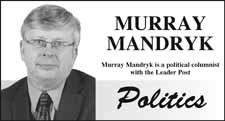The Saskatchewan Liquor and Gaming Authority (SLGA) made $442 million in 2010-11 - $215 million of which came from profits from the sale of alcohol.
Unfortunately, this is about all we know about how booze pricing works in Saskatchewan - a concern for Provincial Auditor Bonnie Lysyk.
In her recent 2012 annual Provincial Auditor's report, Lysyk concluded that the SLGA should development "a more proactive, transparent, customer-focused strategy for buying liquor that is also more transparent."
"SLGA's current liquor pricing policy does not provide it with an incentive to negotiate lower costs for liquor products," Lysyk concluded in her report. "Under the current policy, lower costs reduce SLGA's profits, which in turn may result in less money provided to the government. SLGA also considers social responsibility in its pricing decisions.
"It is important that information on pricing be transparent so that citizens can understand government revenue and related policy decisions embedded in the pricing of liquor."
If you're like me, Lysyk's report has confirmed what you have suspected for years - that you've been gouged on the liquor you buy. However, governments - even free-enterprise governments like this Saskatchewan Party - don't seem to think there's much wrong with that.
For years now, the debate over Saskatchewan liquor pricing has been over the notion that booze prices are high here because of the cost of the government-owned retailed liquor stores in the province. After all, government liquor store workers do generally receive higher wages than other retail sale employees. (That said, those that buy their booze from private rural vendors in this province already realize there's no break buying from a private outlet.)
However, while Lysyk's report doesn't specifically address the costs associated with the public component of retail liquor sales in Saskatchewan, she does suggest that what goes into liquor pricing is a lot more bit more complicated than that.
According to the Provincial Auditor, like most Canadian jurisdictions, Saskatchewan's liquor retail pricing is based "on a fixed mark-up of the wholesale price". Moreover, the mark-up rate is the same for all products within a category and ranges from 40 percent to 184 percent (with whisky, gin, rum and vodka having a mark-up of about 162 per cent.)
Given this relationship between the wholesale and retail prices, the main ways for the SLGA to increase its revenue is by "adjusting the product mix, increase consumer demand, enhance customer service or increase the mark-up percentage," Lysyk wrote in her report. There really is no incentive to "negotiate lower wholesale costs as so doing so would result in lower retail sales, and, in turn lower profits."
"Lower profits would be contrary to its mandate of generating profits for the General Revenue Fund and encouraging responsible drinking," the Provincial Auditor wrote.
Saskatchewan retail liquor prices appear to be "within the range of those set by other provinces," Lysyk said. However, all Canadian governments have "traditionally used liquor profits (taxes and mark-ups) to subsidize government programs."
But surely a more free-enterprise-minded government like the Saskatchewan Party that supports free markets and an adult individual's right to make his or her own choices would have a problem with this approach, right? Well, maybe not.
Asked about the Auditor's findings, SLGA Minister Donna Harpauer acknowledged that more disclosure on how liquor pricing worked might be in order, but there will be no policy change that will result in cheaper consumer prices at the expense of provincial coffers.
In a choice between raking in as much money from alcohol sales as possible and raising taxes elsewhere, the government will continue to opt for getting as much money out liquor sales as possible, Harpauer admitted.
And that may be all that you really need to know about liquor pricing, folks. They are high and will remain high because governments see that as the best policy.
Murray Mandryk has been covering provincial politics for over 15 years.




